In this blog post, Maria Galindo and Ervin Ong share their best tips and tricks for Amazon FBA seller success. Topics discussed include:
- How to find long tail keywords
- How to access your search term report to find your winning long tail keywords
- Missed an episode? See them all here.
We’re covering all of this today in episode 23 of Seller Strategies: Long Tail Keywords. Watch the video, keep reading and don’t forget to subscribe to our YouTube channel so you never miss an episode!
Welcome to Seller Strategies!
In today’s blog post, we’re going to talk about how to find cheap keywords that will bring you extra sales per month.
Let me share a story…
Recently, Amazon completely stopped running my PPC ads due to a billing discrepancy and even though my PPC campaigns were stopped the sales continued and kept ringing in. Fortunately, I was getting 70% of my sales from organic keywords and only 30% of my sales from PPC. So that got me thinking, what keywords are there that I’m ranking for. After reviewing my customer search term report I found several highly converting long tail keywords that had a search volume anywhere from 2,000 to 12,000 per month, which quickly made me appreciate the value of long tail keywords.
Long Tail Keywords: are longer and more specific keyword phrases that visitors are more likely to use when they’re closer to a point-of-purchase or when they’re using voice search.
How to download the search term report
Before I get ahead of myself, let me show you where you can find your search term report. The first thing you’ll want to do is head over to the Reports tab in Seller Central and select Advertising Reports from the drop-down menu.
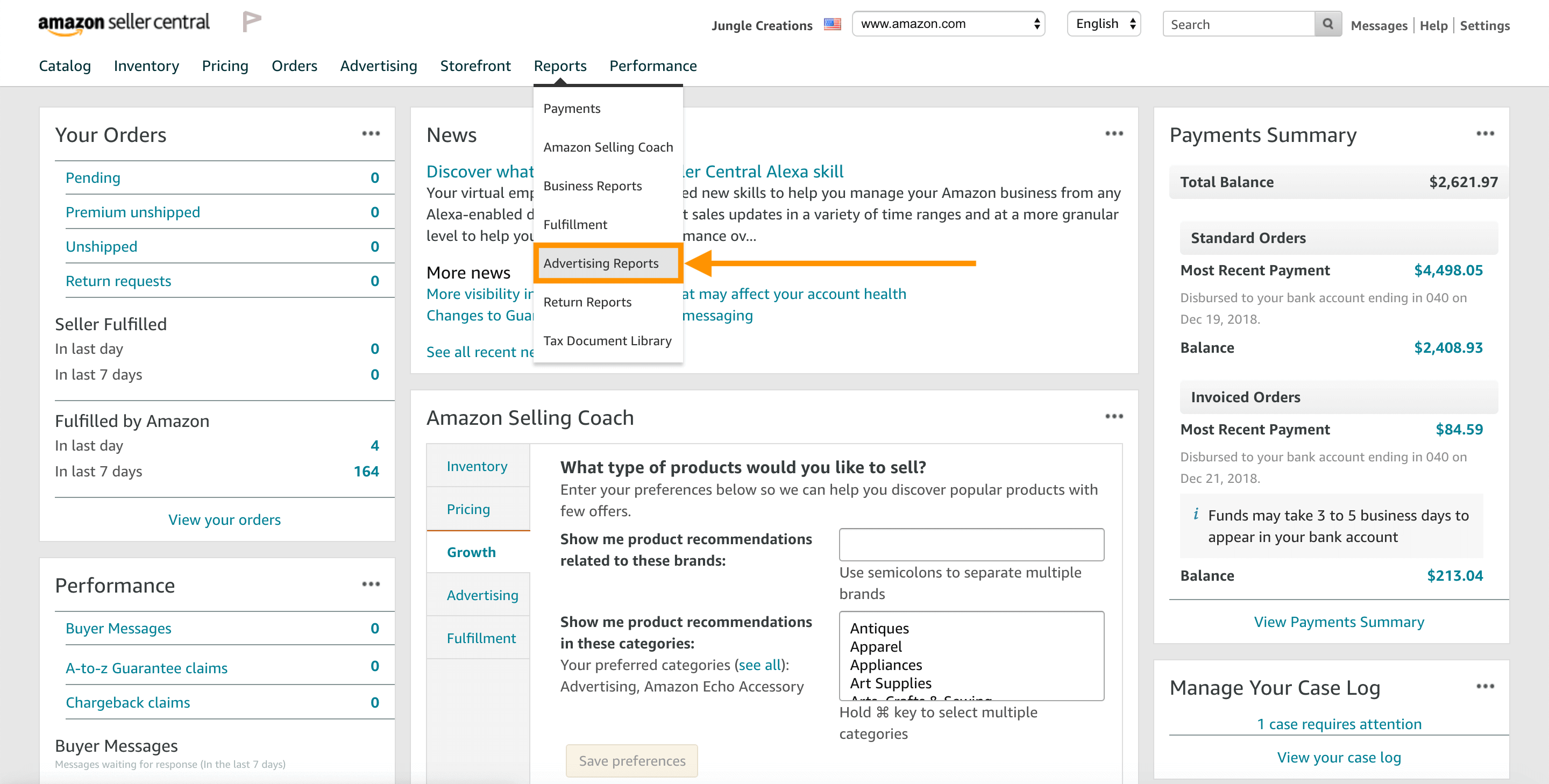
By default, you can generate a Sponsored Products Search Terms Report for the last month but we want to customize the timeframe so we can gather all the data for the last 60 days.
Under Report period select Customized as pictured below.
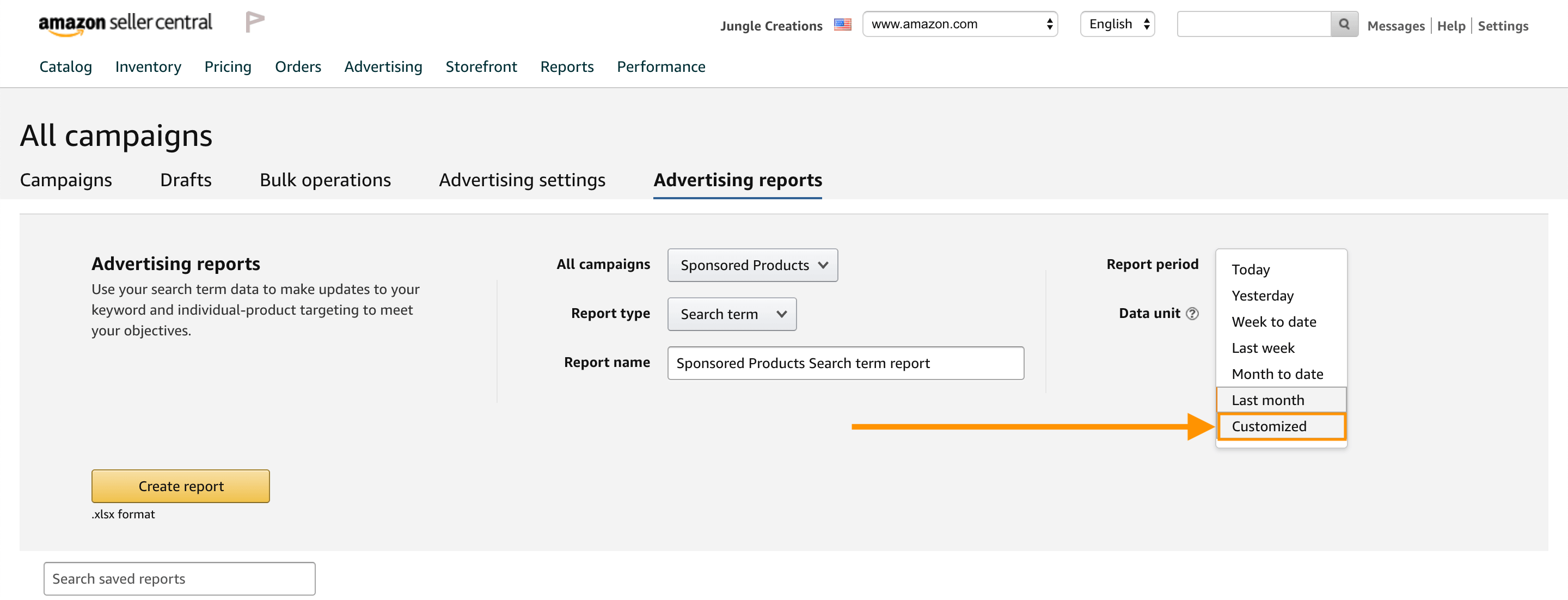
Whenever you download your customer search term report, you can run your query as far back as the past 60 days of sales. So you want to make sure that you try and maximize that report by looking back at the past 60 days of your PPC campaigns and look at which search terms specifically have given you the most sales.
As you can see below I’ve changed the “From” date to reflect the maximum timeframe Amazon allows.
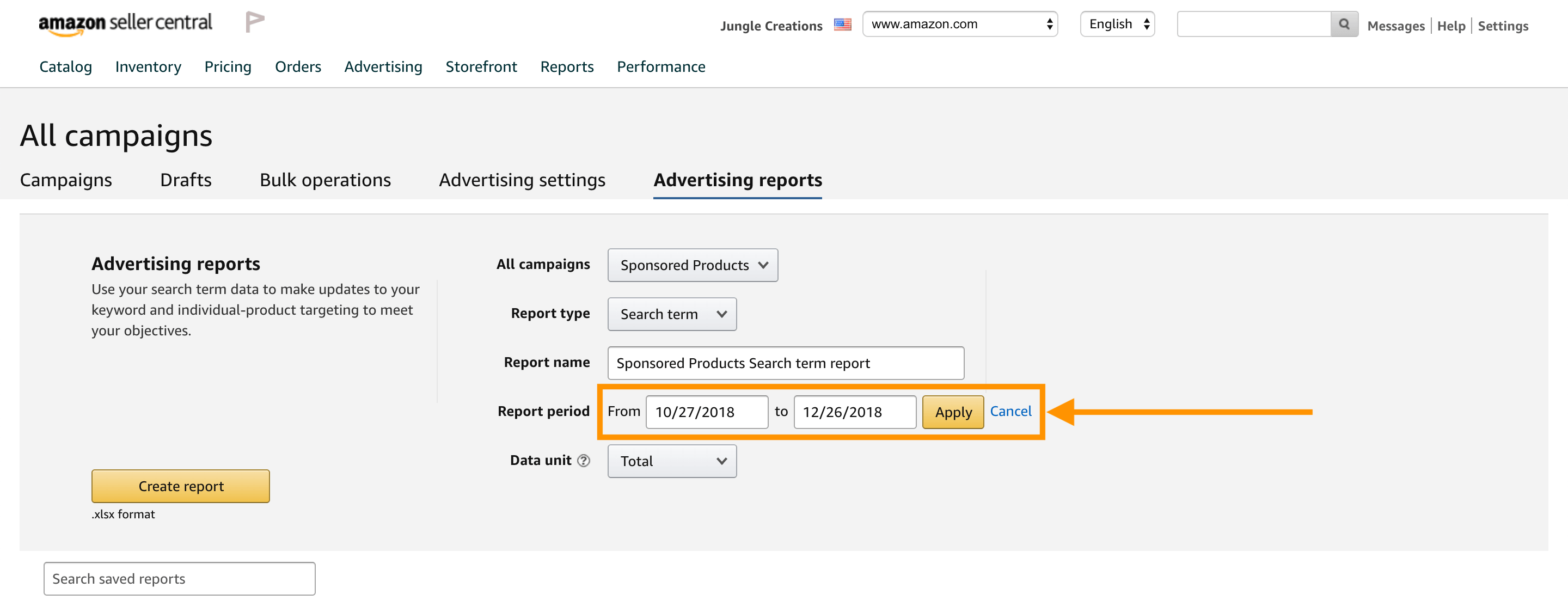
I like to name my reports with the date that they were processed.
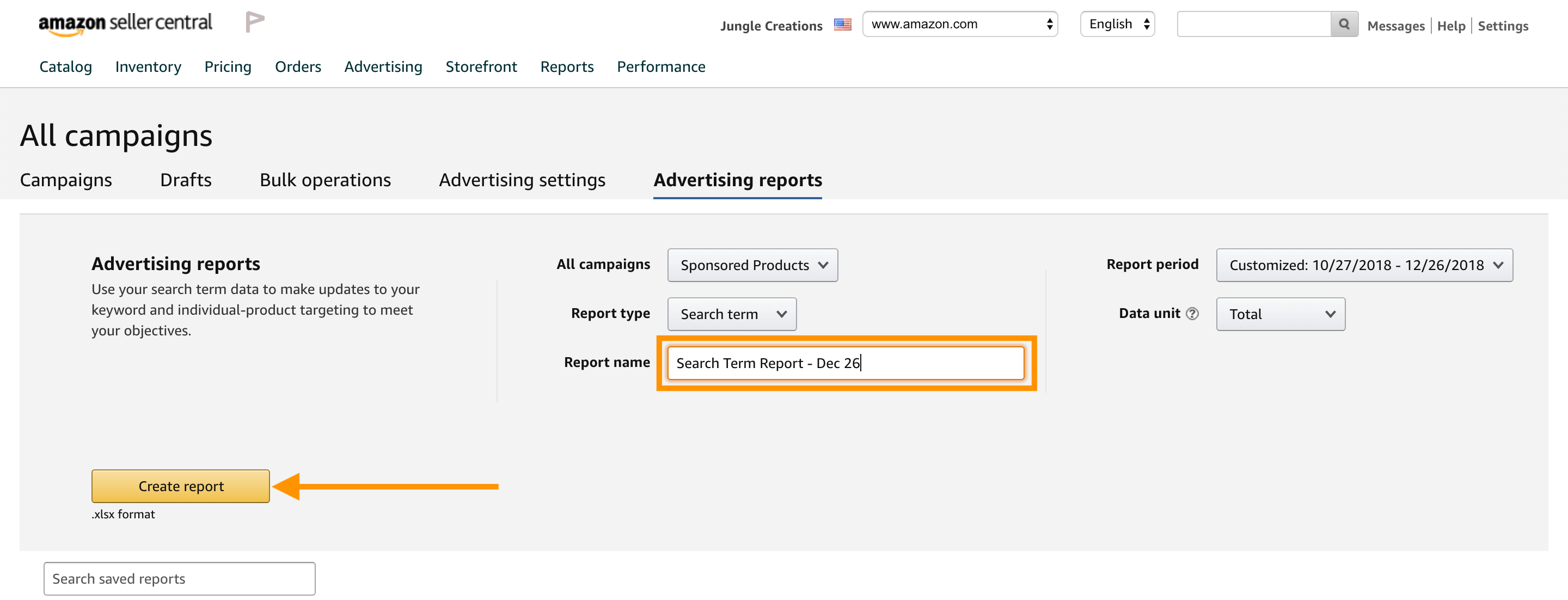
Lastly, select Create report and once your report is ready for download you’ll see it populate in the space below.
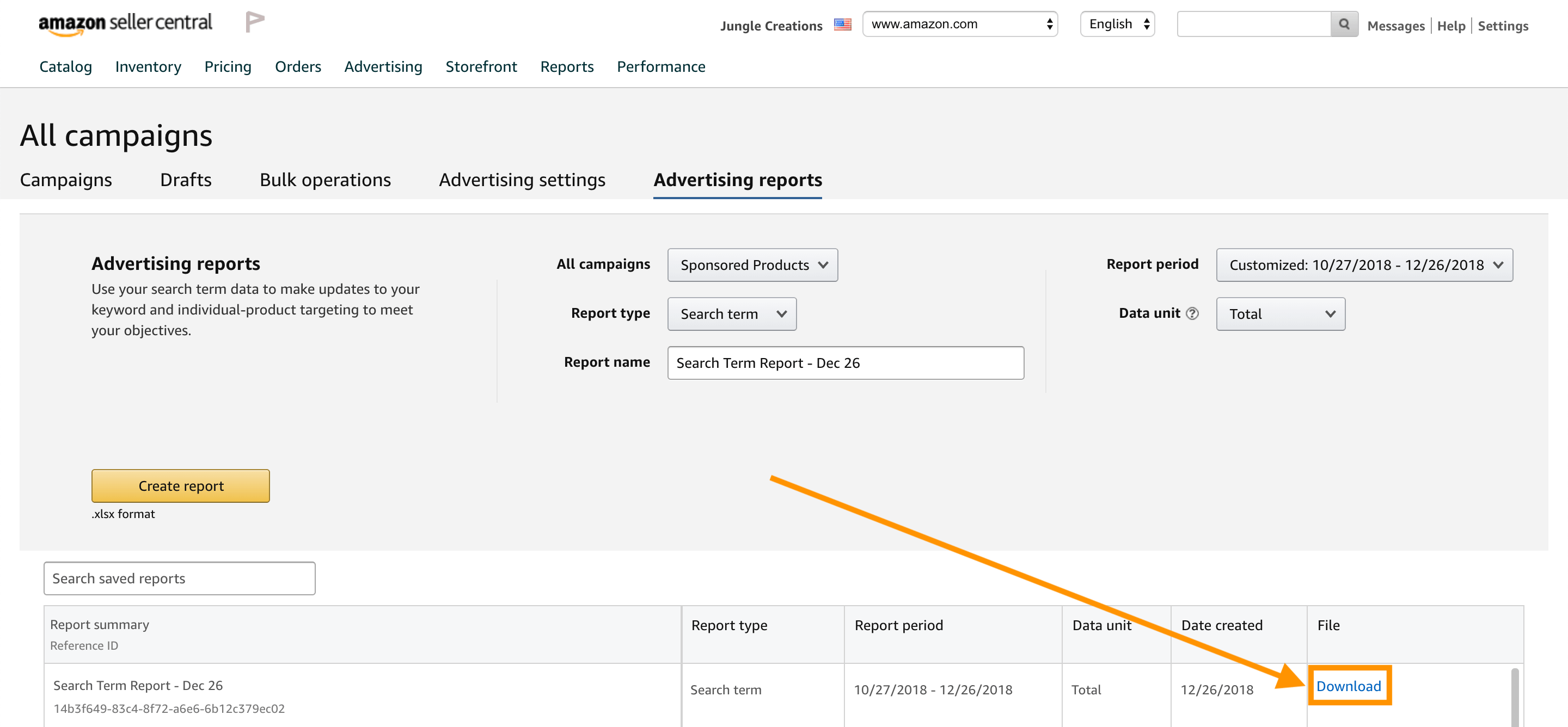
Why go through all this trouble?
If you look at your customer search term volume and sort it by the number of orders that each search term brought about, you can see hidden gems there that you can rank for on PPC or maybe less competitive long tail keywords that you can easily rank for and get more sales from, as opposed to trying to compete against say the main keyword on page one on Amazon.
How can I find long tail keywords if I’m just getting starting with PPC?
Another place where you can find these low hanging fruit keywords would be on Jungle Scout’s new keyword tool, Keyword Scout. If we look at the example below for the keyphrase “cutting board”, you’ll find that Keyword Scout was able to generate a list of long tail keywords like “cutting boards for kitchen” or “wood cutting board”, etc.
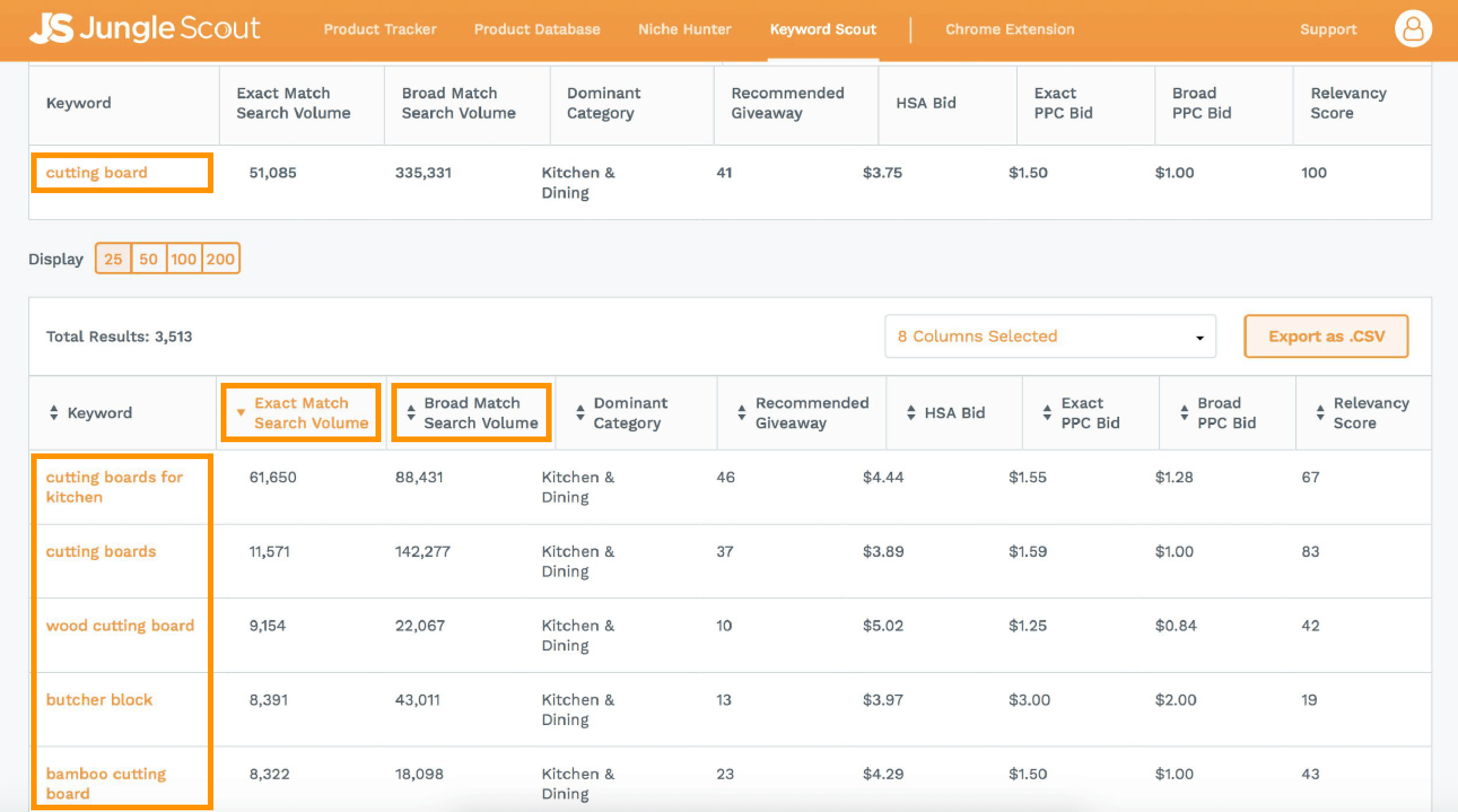
We can then use these long tail keywords for our PPC campaigns and/or integrate them into our listing.
Isolate your winning long tail keywords
Once you find these low hanging fruit keywords, you can then make a greater case for them. Maybe you can create a new campaign for them and raise your bid, especially if your cost is really low. Once you sell more products under the PPC campaigns, they’ll just bring your rank up for these keywords higher and higher and then you’ll eventually find yourself on the first page.
Conclusion
The key takeaway from today’s blog post is to run a search term report and do this regularly (weekly if possible). These reports will help you find long tail keywords that tend to be highly converting and cheap to bid on in our PPC campaigns. If you’ve never run a PPC campaign then definitely take advantage of tools such as Keyword Scout to find those long tail keywords. The goal is to use these longtail keywords in our PPC campaigns and sprinkle them throughout our listing.
Well, that’s it for today, however, tune in next week as we continue to share our best tips and tricks to help you succeed as an Amazon FBA seller.
Missed an episode? See them all here.

 3 Comments
3 Comments
3 comments on “Seller Strategies: Long Tail Keywords”